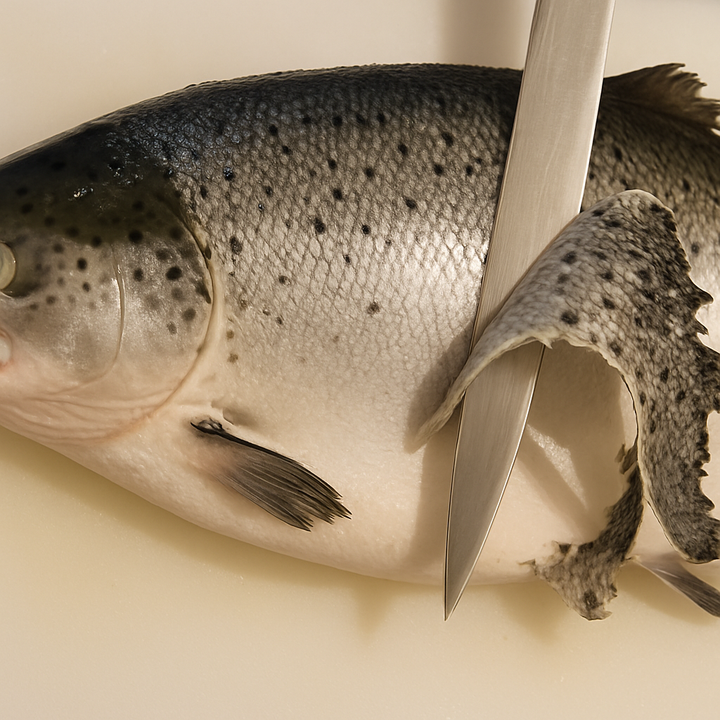The Essential Role of Soy Sauce in Sushi
Soy sauce, a cornerstone of Japanese cuisine, plays an essential role in sushi by enhancing flavors, balancing tastes, and adding umami depth through its complex fermentation process with over 300 aromatic compounds.

Soy sauce, or shoyu, is a vital component of Japanese cuisine, enhancing flavors, neutralizing odors, and preserving food.
Its rich history and unique fermentation process make it an irreplaceable condiment in kitchens worldwide.
Soy sauce's distinct aroma comes from over 300 fragrant compounds, including floral, fruity, and nutty notes, developed naturally during fermentation with koji mold (aspergillus) in the maturation of Moromi (mash).
This intricate process not only creates its characteristic taste but also ensures its versatility, embodying all five basic tastes: sweet, sour, salty, bitter, and umami.
Heating intensifies the aroma and darkens the color, with variations in the process distinguishing the five primary types of soy sauce.
Types of Soy Sauce
Dark Soy Sauce (Koikuchi)
The most common type of soy sauce, Koikuchi, is what most people envision when thinking of soy sauce.
This variety soy sauce is made with equal parts steamed soybeans and roasted wheat, fermented for six to eight months.
The fermentation process involves breaking down soy protein and wheat carbohydrates with the help of koji mold, yeast, and lactobacillus.
After fermentation, the raw soy sauce is squeezed from the Moromi, heated (similar to milk pasteurization), and filtered to remove sediment.
This results in a robust flavor with approximately 16% salt content. Dark soy sauce accounts for 80% of soy sauce production in Japan, with Chiba, Hyogo, and Aichi being the primary production areas.
Light Soy Sauce (Usukuchi)
Despite its name, Light Soy Sauce (Usukuchi) has a higher salt content—around 18%—than dark soy sauce.
Its lighter color and milder flavor make it ideal for preserving the natural appearance of dishes while enhancing their taste.
Usukuchi is primarily produced in Hyogo Prefecture and accounts for 13% of Japan's soy sauce production. Its subtlety and versatility make it a staple in delicate Japanese dishes.
Tamari Soy Sauce
Tamari soy sauce is considered the origin of Japanese soy sauce. Unlike Koikuchi, which uses equal parts soybeans and wheat, Tamari is made primarily from soybeans with little or no wheat, giving it a richer, thicker texture and a stronger umami flavor.
This type of soy sauce originates from the by-product of miso production in Aichi, Gifu, and Mie Prefectures.
While it represents only 2% of Japan’s total soy sauce production, its unique flavor and gluten-free potential make it a favorite among niche markets.
Twice-Brewed Soy Sauce (Saishikomi)
Saishikomi, or twice-brewed soy sauce, undergoes a second fermentation process, where more rice malt and soy sauce are added to an initial batch, effectively doubling the time and ingredients needed.
This creates a deeper, richer flavor and aroma. Often used for sashimi and high-quality dishes, Saishikomi is also known as kanro (honeydew) soy sauce for its sweetness and complexity.
Yamaguchi Prefecture is the primary producer, though it represents only 1% of domestic production.
A notable example is Kamebishi soy sauce, a premium variety made using traditional methods.
Kamebishi stands out for its luxurious texture, intense umami, and slightly sweet, full-bodied profile, making it a favored choice among connoisseurs.
White Soy Sauce (Shiro)
Shiro, or white soy sauce, is pale and sweet, crafted by using more wheat than soybeans.
The wheat is steamed, and the soybeans are roasted, reversing the typical process of Koikuchi soy sauce.
Shiro is usually not heated, resulting in a shorter shelf life and a delicate flavor that suits high-class cuisine. Aichi Prefecture leads its limited production, which constitutes less than 1% of Japan’s total output.
Functional Benefits of Soy Sauce
Soy sauce offers more than just flavor; its chemical composition and fermentation process provide various functional benefits:
- Odor Neutralization: Methanol, formed during amino acid fermentation, eliminates strong odors from fish and meat.
- Appetite Stimulation: The Maillard reaction during heating produces melanoidin, which enhances aroma and stimulates appetite.
- Preservation: The salt, alcohol, and organic acids in soy sauce inhibit the growth of bacteria, including E. coli.
- Flavor Balance: Soy sauce enhances contrasting flavors, intensifying sweetness or tempering saltiness in dishes.
Health Considerations and Sodium Management
While soy sauce enhances flavor, it is essential to manage sodium intake.
The World Health Organization recommends a daily salt intake of no more than 5 grams, equivalent to two tablespoons of regular soy sauce.
Low-sodium soy sauce, containing less than 9% salt, is a healthier option for frequent use.
Additionally, light soy sauces, with around 13% salt, offer a balance between flavor and health considerations.
Proper Storage of Soy Sauce
To maintain its quality, soy sauce should be stored in a cool, dark place before opening.
After opening, it’s best to refrigerate low-sodium varieties and transfer remaining sauce to smaller containers to reduce oxidation.
Proper storage prevents darkening and the formation of yeast, which, while harmless, can alter the aroma and taste.
Soy Sauce and Sushi
Sushi is often considered a healthy dish, but excessive soy sauce use can increase sodium intake.
According to sushi chefs, applying a small amount of soy sauce directly to the topping enhances the balance of flavors.
Nikiri soy sauce, a blend of soy sauce with sake, mirin, and bonito stock, is commonly used in sushi restaurants to enhance flavors without overpowering the delicate taste of sushi.
Soy Sauce for Gluten-Free Diets
Gluten-free diets have gained popularity due to health and allergy concerns.
While traditional soy sauce contains wheat, Tamari offers a gluten-free alternative.
However, not all Tamari is wheat-free, so checking labels is crucial. Sushi restaurants increasingly accommodate gluten-free diners by using gluten-free soy sauce or alternative seasonings.
Regional Specialties in Soy Sauce Production
Yuasa (Wakayama Prefecture)
Yuasa is regarded as the birthplace of soy sauce in Japan, with origins tracing back to Zen priest Kakushin in the Kamakura era.
Using techniques learned in China, Kakushin adapted miso fermentation methods to create soy sauce.
Tatsuno (Hyogo Prefecture)
Tatsuno is renowned for its light soy sauce, benefiting from the region’s high-quality soybeans, wheat, and Akou salt.
Proximity to major markets like Kyoto and Osaka supported its growth.
Shodoshima (Kagawa Prefecture)
Shodoshima’s temperate climate and history of salt production make it ideal for soy sauce brewing.
Traditional wooden vats, still used by some producers, impart unique flavors to the soy sauce.
Ono (Ishikawa Prefecture)
Ono’s soy sauce is known for its mild sweetness, favored in the Hokuriku region. Its production began during the Edo period, supported by the area’s abundant resources and trade routes.
Noda and Choshi (Chiba Prefecture)
Noda and Choshi are home to major soy sauce brands like Kikkoman and Yamasa.
These areas dominate Japan’s market, thanks to high-quality ingredients and advanced brewing techniques.
Soy Sauce in Sushi Restaurants
Professional sushi chefs prioritize three key qualities in soy sauce: color, aroma, and flavor.
Yamasa soy sauce, with its rich umami and vibrant red hue, is a favorite among Edomae sushi chefs.
Higeta’s Honzen soy sauce offers a refined, full-bodied flavor that complements the delicate taste of nigiri sushi. These premium brands exemplify the artistry and tradition of soy sauce production.
Conclusion
Soy sauce is more than a condiment; it is a culinary marvel that bridges tradition and innovation.
Its versatility, complex flavor profile, and regional variations make it indispensable in Japanese cuisine, particularly sushi.
From enhancing umami to balancing flavors, soy sauce continues to be a vital seasoning, treasured by chefs and home cooks alike.


